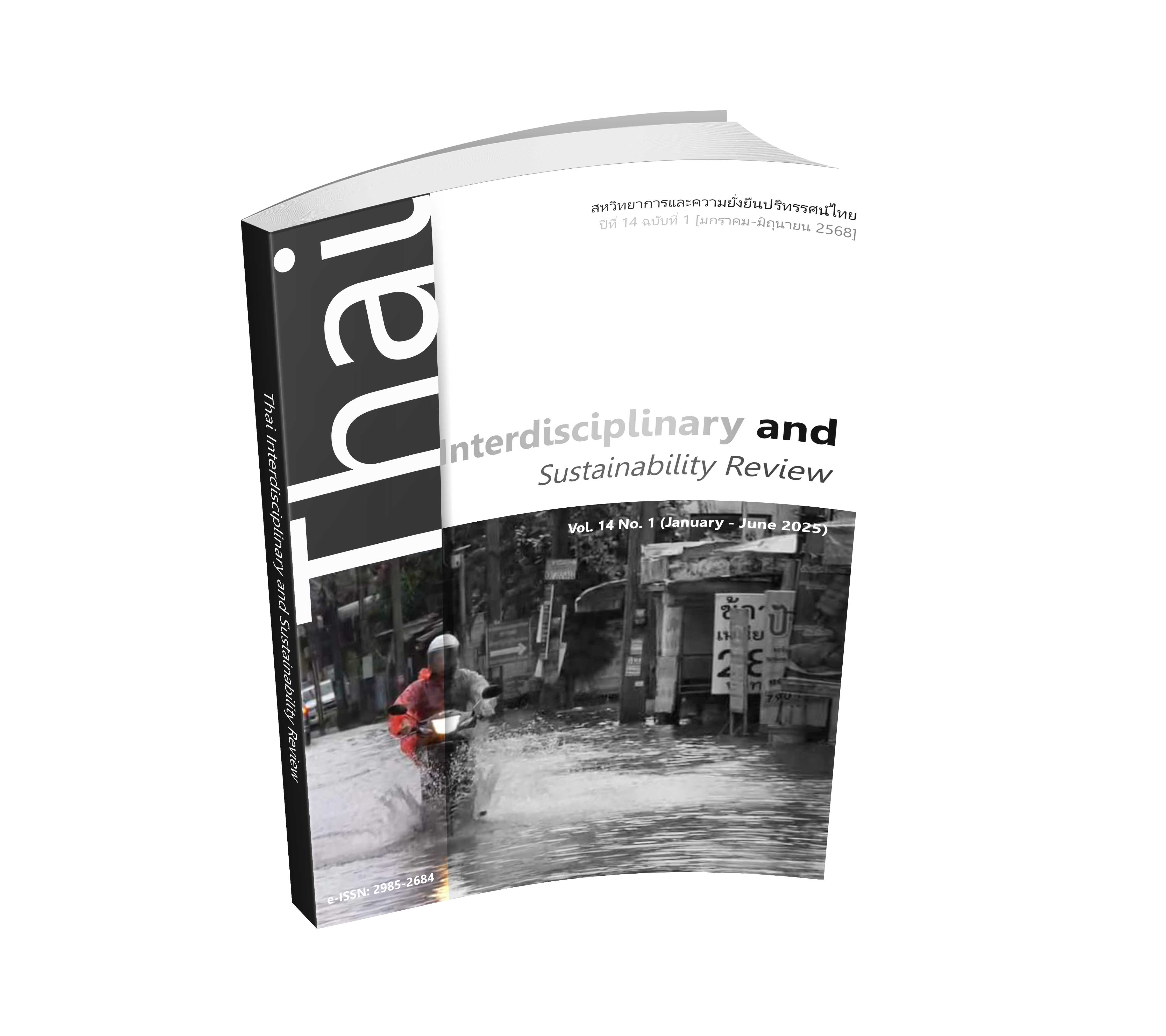PROMOTING THE UTILIZATION OF RECOVERED CARBON BLACK AS A SUSTAINABLE SUBSTITUTE FOR SCRAP TIRES IN THE RUBBER INDUSTRY THROUGH CIRCULAR ECONOMY SYSTEM
DOI:
https://doi.org/10.14456/tisr.2025.5Keywords:
Promotion Model, Recovered Carbon Black, Rubber Industry, Circular Economy SystemAbstract
This research aims to study the use of recovered carbon black (RCB) from scrap tires, develop a promotional model, and analyze its suitability. The study employed a three-phase methodology. The first phase utilized qualitative research. Findings revealed that most companies have policies favoring environmentally friendly raw materials. While RCB use offers cost reduction and environmental benefits, quality limitations compared to original carbon black persist. The second phase involved quantitative research. Analysis showed that waste management concepts and circular economy systems significantly influence RCB promotion, leading to the development of a Business Model Canvas. The final phase evaluated the model's suitability through a survey. Results indicated high approval ratings across all components, particularly in value proposition, revenue streams, key resources, key activities, and key partnerships. The study concludes that RCB has high potential in promoting circular economy and sustainable development in the rubber industry. Based on the findings, the researchers propose the SHIFT Model as a conceptual framework for promoting RCB use, comprising synergize, harmonize, innovate, foster, and transform.
Downloads
References
ชัยวัฒน์ สาวเจริญสุข. (2565). แนวโน้มธุรกิจ/อุตสาหกรรม ปี 2565-2567: อุตสาหกรรมยางพารา. สืบค้นจาก www.krungsri.com/th/research/industry/industry-outlook/agriculture/rubber/io/rubber-2022.
สหธร เพชรวิโรจน์ชัย. (2564). 5 หลักการระบบลีน (LEAN) วิธีการใช้งานเพื่อเพิ่มประสิทธิภาพองค์กร. สืบค้นจาก https://th.hrnote.asia/orgdevelopment/lean-management-210621/.
สำนักงานเศรษฐกิจอุตสาหกรรม. (2561). การจัดการขยะยางล้อ. กรุงเทพฯ: สำนักงานเศรษฐกิจอุตสาหกรรม.
สำนักงานเศรษฐกิจอุตสาหกรรม. (2562). การนําเขม่าดํากลับมาใช้ใหม่. สืบค้นจาก https://rubber.oie.go.th/box/ELib_Document/6965/1.rCB-เขม่าดำ.pdf.
สำนักงานสภาพัฒนาการเศรษฐกิจและสังคมแห่งชาติ. (2565). แผนพัฒนาเศรษฐกิจและสังคมแห่งชาติ ฉบับที่ 13. สืบค้นจาก www.nesdc.go.th/main.php?filename=develop_issue.
สุทิตย์ อาภากโร. (2561). รายการโมเดลการวิจัยและการพัฒนาสังคม (List Model for Research and Social Development). พระนครศรีอยุธยา: สถาบันวิจัยพุทธศาสตร์.
ASTM International. (2019). Standard Terminology Relating to Recovered Carbon Black (rCB). Retrieved from www.astm.org/d8178-18.html.
Bridgestone Americas. (2021). Bridgestone and Michelin to Discuss Role of Recovered Carbon Black in Creating More Sustainable Mobility Ecosystem. Tennessee: Bridgestone Americas Press Center.
Dwivedi, C., Manjare, S., & Rajan, S. (2020). Recycling of waste tire by pyrolysis to recover carbon black: Alternative & environment-friendly reinforcing filler for natural rubber compounds. Composites Part B: Engineering, 200, 108346.
European Commission. (2016). Carbon Footprinting of Tyres: Final Report. Retrieved from https://ec.europa.eu/jrc/en/publication/carbon-footprinting-tyres-final-report.
Grand View Research. (2019). Carbon Black Market Size, Share & Trends Analysis Report by Application (Tire, Non-tire Rubber, Inks & Coatings, Plastic), By Region (North America, Europe, APAC, CSA, MEA), And Segment Forecasts, 2020-2027. Retrieved from www.grandviewresearch.com/industry-analysis/recovered-carbon-black-market.
Lajhar, Z., Mihalyi, I., Nadasan, M., Mihalyi, A., & Czako, Z. (2019). Characterization of Recovered Carbon Black from Waste Tires and its Use as a Filler in the Rubber Industry. Journal of Polymers and the Environment, 27(11), 2293-2302.
Ngoc Huy, D. (2019). Applications and Advantages of Rcarbon Black; A Business Model in Developing Countries. Scholar Journal of Applied Sciences and Research, 2(8), 26-30.
Ramesh, C., Narendrakumar, G., & Kamaraj, R. (2019). Life Cycle Assessment of Carbon Black from Tyre Pyrolysis. Journal of Cleaner Production, 229, 783-791.
ReportLinker. (2021). Carbon Black Market-Growth, Trends, COVID-19 Impact, and Forecasts (2021-2026). Retrieved from https://finance.yahoo.com/news/carbon-black-market-growth-trends-100000704.html.
Urrego-Yepes, W., Cardona-Uribe, N., Vargas-Isaza, C., & Martínez, J. (2021). Incorporating the recovered carbon black produced in an industrial-scale waste tire pyrolysis plant into a natural rubber formulation. Journal of Environmental Management, 287, 112292.
Xu, J., Yu, J., Xu, J., Sun, C., He, W., Huang, J., & Li, G. (2020). High-value utilization of waste tires: A review with focus on modified carbon black from pyrolysis. Science of the Total Environment, 742, 140235.
Yu, C., Lin, Y., Chen, C., Wu, J., & Chu, P. (2017). A circular economy solution for rubber waste: Development of a sustainable rubber cycle. Journal of Cleaner Production, 150, 189-198.

Downloads
Published
How to Cite
Issue
Section
License
Copyright (c) 2025 Authors

This work is licensed under a Creative Commons Attribution-NonCommercial-NoDerivatives 4.0 International License.









.png)


